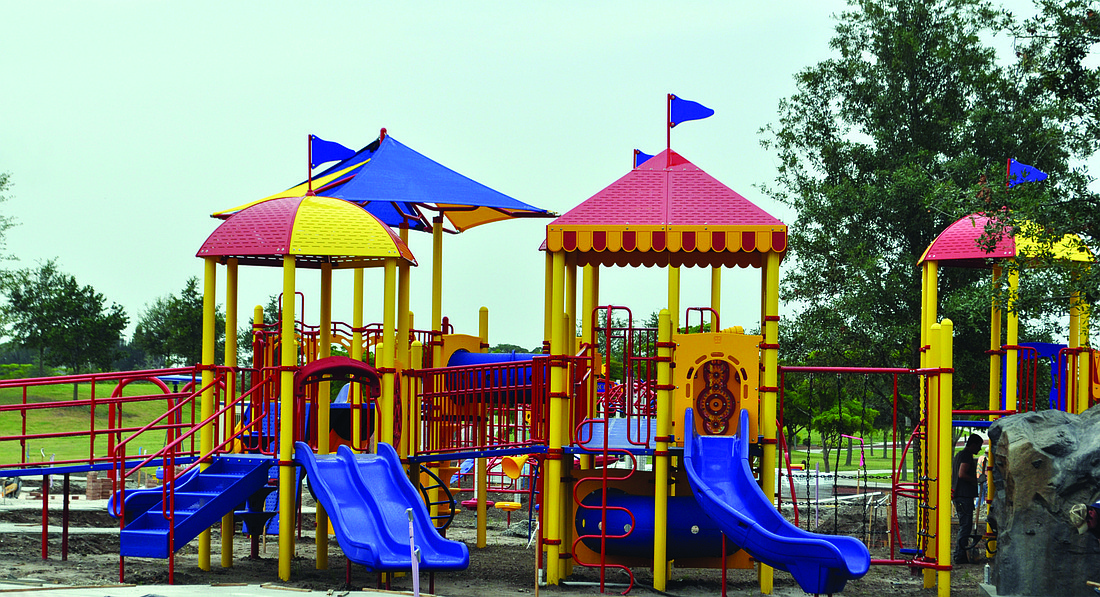- April 24, 2024
-
-
Loading

Loading

For years, the city of Sarasota has struggled with maintaining an adequate level of service at its parks. If the public demand for it exists, the city may be willing to consider unorthodox methods of addressing the issue.
At a Coalition of City Neighborhood Associations meeting this month, city Public Works General Manager Todd Kucharski brought up one potential tool for supporting city-owned parks: the creation of a Parks and Recreation District.
The park district could function similarly to Sarasota County Schools or the Downtown Improvement District, imposing a tax on property owners within the city or adjacent to a specific park. That money would then be set aside specifically for reinvestment within city parks. A common phenomenon in northern states, Kucharski said Boca Raton is one of the few nearby examples of a city with a park district.
It was just a hypothetical — an idea brought up at the end of a longer presentation. Still, Kucharski said he has gotten positive feedback to the idea from city residents for two reasons.
“One, so they understood specifically what their tax dollars were going toward,” Kucharski said. “And two, trying to set it up so we had a proactive approach to capital reinvestment in our parks.”
That proactive capital spending is something that’s been absent in the city of Sarasota since the economic downturn. With municipal budgets stretched thin, Sarasota County returned control of most parks within the city limits to the city itself, introducing new expenses at an inopportune moment.
The county gradually drew down its support for city parks beginning in 2011, and it now offers financial support only for parks defined as “regional,” such as Arlington Park or Lido Beach.
As a result, the city hasn’t had the opportunity to do much maintenance at its parks lately other than mow the grass. Kucharski has grander aspirations for the city’s parks. He points to the work of Jerry Fogle, the manager of the Robert L. Taylor Community Complex, who is able to offer programs such as sports leagues and fitness classes to members of the recreation center.
For now, in the rest of the city’s parks, nothing of that nature is offered. The Sarasota Police Department occasionally hosts events, which include movies in Payne Park — the type of thing Kucharski believes the parks department should be organizing.
“Jerry’s got his stuff over there at the Robert L. Taylor Center, but there isn’t something that’s set up — and I don’t have the staffing — to create any kind of programming,” Kucharski said. “Whatever it is — summer camp, tai chi, theater in the park, those kinds of things — we don’t have the mechanism to do any of that.”
Kucharski said that in the late ‘80s and early ‘90s, a city parks and recreation department was able to offer that type of programming. The City Commission allocated money in the 2014-15 budget for a city-funded program at Lido Beach, which he said could include swim lessons for kids or aquatic aerobics. Beyond that, however, the options are limited.
Before it can begin a conversation about funding sources and programming, city staff needs to determine what residents want and expect from the parks in Sarasota. Kucharski said staff was interested in continuing to gauge the needs of the public, a process the city has already begun as it works toward developing updated master plans for Payne Park and Bobby Jones Golf Course.
“The staff knows what it takes to do parks and recreation,” Kucharski said. “What we don’t know is, what does the community want? If we do know what they want, we can gear toward that and potentially identify what mechanism we need to do that.”
In the meantime, the city has to deal with the current budgetary realities — and with the interlocal agreement with the county that withdrew funding from most city parks. In effect until 2021, the agreement outlines the level of service standard the county must maintain in operating the regional parks, as well as the annual budget — $1.9 million — for that maintenance.
Kucharski said there are elements of the agreement that may be worth revisiting now that the county and city are more familiar with it. The city is responsible for any capital repairs or replacements at regional parks that exceed $5,000, but the county is the sole recipient of revenue generated at those parks. Those in attendance at the CCNA meeting questioned the definition of “regional,” which leaves out Robert L. Taylor center and Payne Park.
Any decision to re-examine the interlocal agreement would need to come from the County Commission or City Commission. Carolyn Brown, the county’s parks director, said she hasn’t received any indication either side would be interested in revisiting the terms of the interlocal agreement.
“We work collaboratively and try to resolve issues together,” Brown said. “It’s a good relationship.”
Right now, Kucharski said, the future direction of the city’s parks is unknown — and it’s likely to stay that way until staff feels it has accurately determined the needs of the public.
“It really now comes down to a point that the community needs to tell us what they want,” Kucharski said.